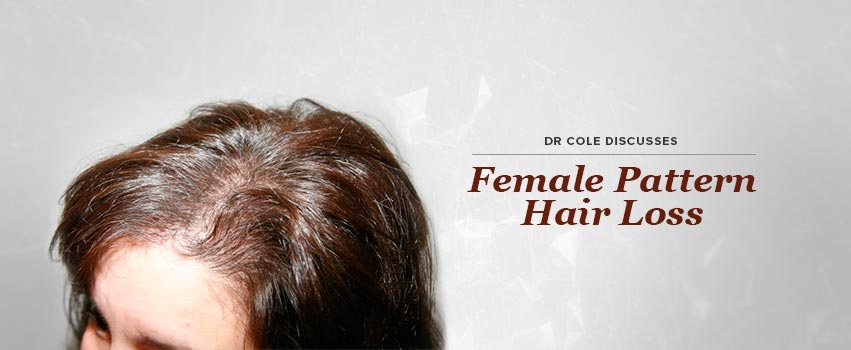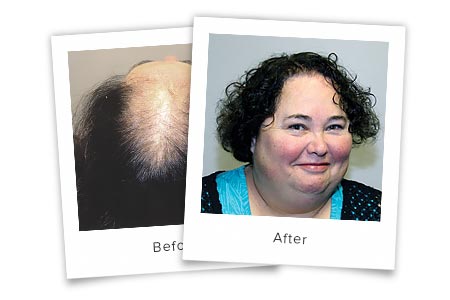
Dr. Cole Discusses:
Female Pattern Hair Loss
Hair loss is not exclusive to men, millions of women suffer from female pattern hair loss (FPHL) and its effects can be devastating. Hair loss in women can adversely affect self-image and emotional well being.
The most common type of hair loss in women is Androgenetic Alopecia, also known as female pattern alopecia. Approximately 40 % of women by age 50 show signs of hair loss and less than 45% of women reach age 80 without undergoing some hair loss.

Typically female patients present with thinning hair over the entire scalp area while the front hairline remains. While the effects of Androgenetic Alopecia are believed to be permanent, female hair loss rarely progresses to total or near total baldness as it does in men.
The good news is that Female Pattern Hair Loss (FPHL) can be effectively treated. The treatment options include Medications, Hair Transplantation and Laser Light Therapy.
Medications include Minoxidil (Rogaine) which is applied directly to the scalp. Minoxidil can reinvigorate hair follicles prompting re-growth and thickening existing hair. Minoxodil was first used as an oral medication to treat High Blood Pressure as an antihypertensive and it was noticed that patients began to grow hair in places that they had lost it. Further research indicated that applying Minoxidil directly to the scalp could also stimulate hair growth. Minoxidil can be an effective component of the Female Pattern Hair Loss (FPHL) treatment plan.
Hair Transplant Surgery is on the rise in women suffering from Hair Loss. Approximately one third of hair transplants are performed on women. Hair Transplant surgery requires no hospital stay and produces natural looking denser hair. Transplantation is the best way to restore hair in areas that are thinning or balding.
Laser Light Therapy or low level laser therapy (LLLT) is an effective way to treat the progression of hair loss. Laser Cap LCPRO is a non-surgical take home hair therapy cap that delivers upto 4 Joules/cm2 of laser light energy to the scalp. Each treatment improves cellular respiration stimulating the hair follicles to produce thicker, fuller hair. Low Level Light Therapy has been found to arrest and stabilize hair loss and is effective as an adjunct treatment for Female Pattern Hair Loss.
Stress Management can be crucial in the fight against female pattern hair loss. Often emotional stress can be the cause of Female Pattern Hair Loss as the body shuts down hair production during these periods of emotional stress. Hair is lost and becomes thin and is not replaced with new hair. Managing emotional and psychological stressors is a key component to combatting Female Pattern Hair Loss (FPHL).
